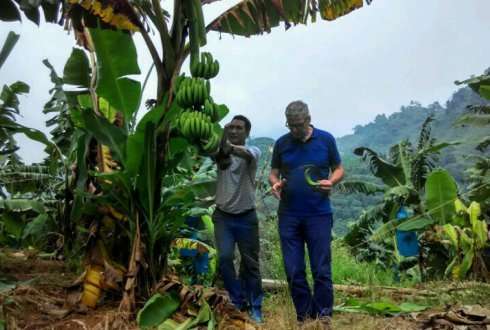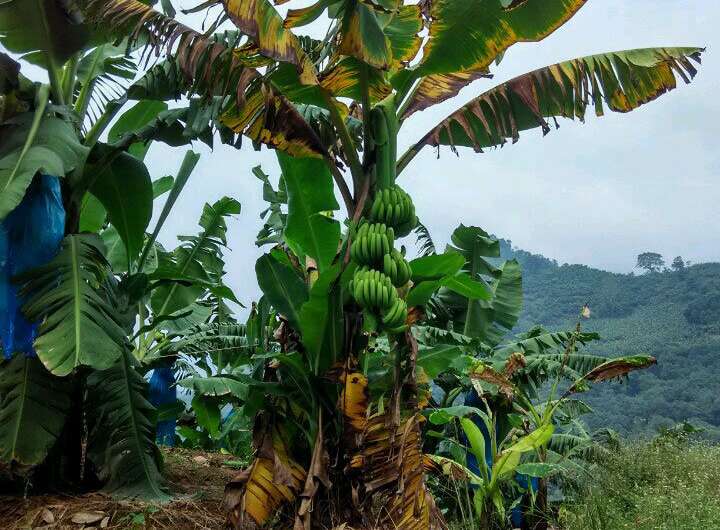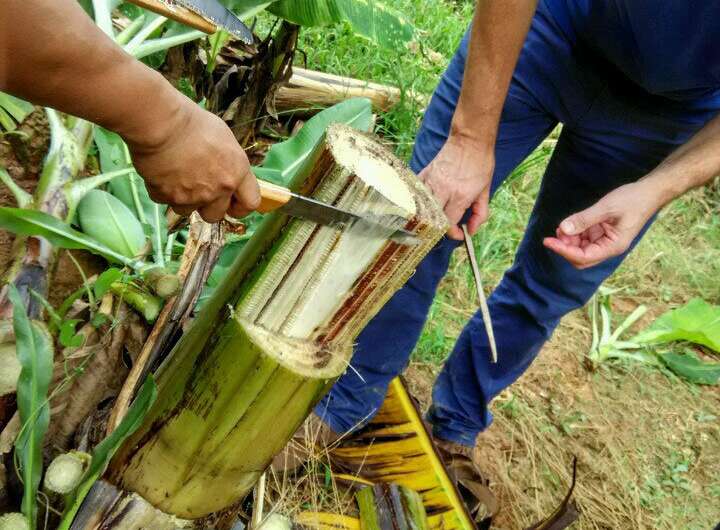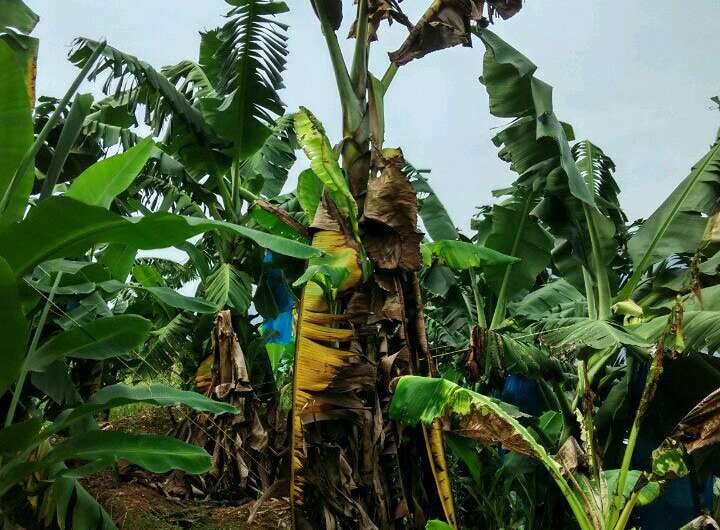Path of Panama disease fungus established for the first time

The much-feared Tropical Race 4 strain of the Fusarium oxysporum soil fungus which causes Panama disease in Cavendish bananas has now been discovered in Myanmar. This follows closely on the heels of its discovery in Vietnam and Laos. The fungus is expected to have disastrous consequences on individual banana growers and the global banana industry. Scientists from Wageningen University & Research working with colleagues abroad have detected the fungus and used advanced techniques to find out where it came from.
Panama disease is a form of Fusarium wilt, which is caused by Fusarium oxysporum. The strain of this fungus known as Tropical Race 4 (TR4) affects many local banana varieties as well as the Cavendish cultivar, which accounts for 85% of world trade in bananas. Since all Cavendish bananas are clones of each other and there is little variation, they are highly susceptible to TR4, making the sector extremely vulnerable.
The fungus, which appeared several decades ago, infects the roots, attacks the vascular system and eventually kills the plant. Once a plot is infected, bananas can no longer be cultivated there. This is a major threat to the global monoculture of Cavendish bananas.
Genome research shows links between TR4 in different countries
TR4 has now been detected in Myanmar for the first time and its presence in Vietnam and Laos has been confirmed. In addition, research has made it possible to see which path it took to get there. There are links between the strains found in TR4 in China and these countries and in Pakistan and the Philippines, and between those detected in Libanon and Jordan.

After sampling missions, the fungus was isolated from infected plants and then further studied by means of DNA testing. By determining the number and nature of mutations in the fungus, scientists were able to see exactly which strains are related. "This has reaffirmed the need for quarantine measures to prevent international spread and the need for sustainable solutions," states Gert Kema, professor by special appointment of tropical phytopathology at Wageningen University & Research.

Crucial crop
Bananas are the fourth most important food crop in developing countries after wheat, rice and maize. They are also the world's most eaten fruit. In developed countries they are a popular snack, but for many people in the tropics they represent a major source of nutrition. Millions of farmers depend on good harvests and these are increasingly under threat from the TR4 fungal strain.
The study was conducted by Wageningen University and Research in cooperation with international partners and published in Frontiers in Plant Science on 22 March 2018.

More information: Si-Jun Zheng et al. New Geographical Insights of the Latest Expansion of Fusarium oxysporum f.sp. cubense Tropical Race 4 Into the Greater Mekong Subregion, Frontiers in Plant Science (2018). DOI: 10.3389/fpls.2018.00457
Provided by Wageningen University




















